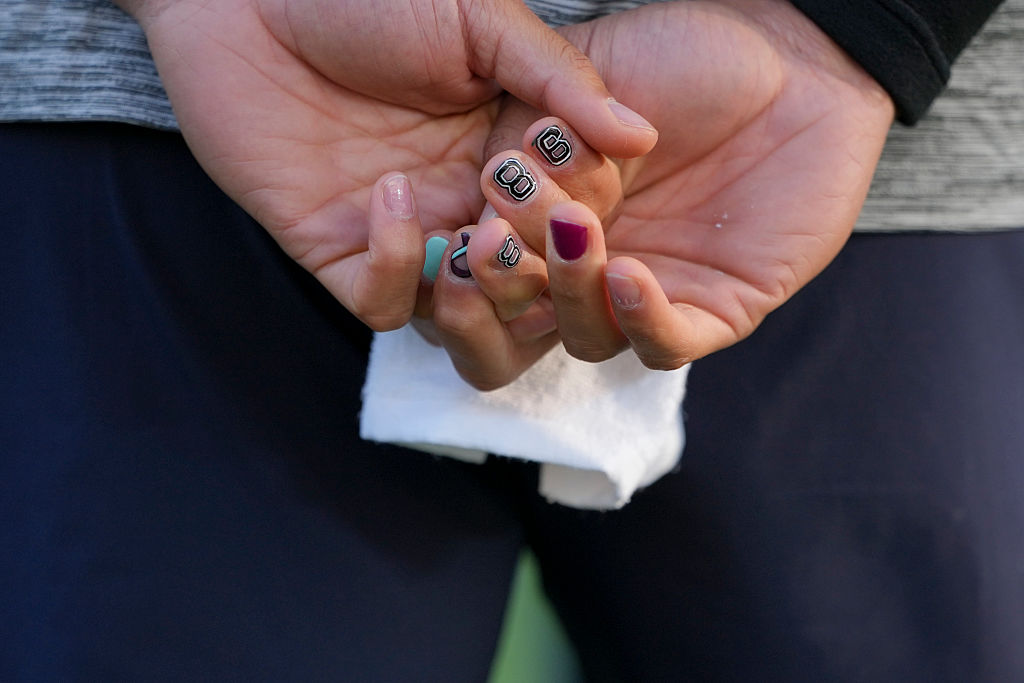
This year, the national conversation around suicide prevention reached an unexpected stage: the NFL. When Chicago Bears quarterback Caleb Williams took the field with “988” painted on his fingernails, he wasn’t just making a fashion statement. He was putting the Suicide & Crisis Lifeline on display for millions of viewers. That small but powerful gesture sparked conversations about mental health, demonstrating that athletes can utilize their platforms to break down stigma and remind people that help is just a three-digit phone call away.
Table of Contents
The Stats And Their Impact On Our Community
Death by suicide is now one of the leading causes of death in the United States, with troubling increases among Black youth in particular. While the subject is complex, it is also preventable—when communities are equipped to recognize the warning signs, talk openly about mental health, and connect loved ones to lifesaving support.
But what does a moment like this mean for suicide prevention, especially in Black communities where stigma and mistrust often run deep?
Vic Armstrong, VP Health Equity and Engagement at the American Foundation for Suicide Prevention, Answers Our Questions
To answer that question, Black Health Matters spoke with Vic Armstrong, Vice President for Health Equity and Engagement at the American Foundation for Suicide Prevention (AFSP). Armstrong has dedicated his career to making suicide prevention resources accessible, culturally relevant, and rooted in community trust.
In this conversation, he shares what everyone should know about suicide warning signs, the importance of 988, and why representation from public figures like Caleb Williams can help save lives.
BHM: Can you share how your personal background has shaped the way you approach this field of work today?
I grew up in a rural community in North Carolina. We didn’t talk about mental health at all. We didn’t see therapists—it just wasn’t part of the culture. If someone were struggling, we’d say they were “going through something” or “just having a hard time.” But therapy wasn’t seen as an option, and even if it was, there weren’t many providers who looked like us or understood our experiences.
On top of that, there’s mistrust. We’ve seen how medical institutions have mistreated Black communities—Tuskegee [Syphilis Experiment], Henrietta Lacks, and others. That history doesn’t just disappear. It creates barriers where people think, “I don’t know if I can trust this system.”
So, for me, this work is personal. I know what it’s like to grow up without resources, without seeing mental health as a real option. That’s why I believe in ensuring that people see themselves reflected in this work and know there are safe spaces where they can discuss and receive support.
BHM: Could you talk about what health equity means in the context of mental health and suicide prevention, and why it’s such an important part of the conversation?
Vic Armstrong: That’s a great question. People often confuse health equity with DEI. They’re related, but different. DEI focuses on the internal environment of an organization—creating diversity, equity, inclusion, and belonging. Health equity, however, focuses on population health. It’s about ensuring everyone has the opportunity to live their healthiest life.
In suicide prevention, health equity means creating resources that truly reach all communities. Think of it like a business: if your product isn’t reaching a segment of the population, you ask, “Why not?” and adjust. We approach health equity in the same way—what do we need to do to reach communities that are being left behind?
Many think of health equity only in terms of race and ethnicity, but it’s broader. For example, rural communities face unique challenges compared to urban ones. First responders—more die by suicide than in the line of duty. Veterans: In the past 10 years, we’ve lost more to suicide than soldiers killed in the entire Vietnam War. Construction workers also face disproportionately high suicide rates. Therefore, health equity is about creating resources for all communities disproportionately impacted, not just one segment.
Addressing Some Common Misconceptions Associated With Mental Health Crises/Suicide Attempts
BHM: Can you explain how the 988 Suicide & Crisis line works, and address some common misconceptions about it?
Vic Armstrong: Absolutely. 988 is the national three-digit dialing code for suicide prevention and mental health crisis. Think of it like 911, but for mental health. Anyone in the United States can dial or text 988, and they’ll be connected to a trained crisis counselor.
One of the misconceptions is that calling 988 will automatically summon the police to your door. That is not true.
In fact, in the majority of cases—over 98%—crises are resolved over the phone without the need for law enforcement. The goal is to de-escalate, provide immediate support, and connect people to local resources.
Another misconception is that it’s only for people who are actively suicidal. That’s also not true. You can call 988 if you’re just overwhelmed, anxious, or worried about a loved one. It’s for anyone experiencing emotional distress. So, 988 is really about making mental health support more accessible. Instead of trying to remember a 1-800 number, people now have an easy, three-digit number to call in times of crisis.
Black Men’s Reactions to Caleb Williams’ Message
BHM: Recently, Caleb Williams, the NFL quarterback for the Chicago Bears, publicly displayed 988 on his fingernails. How significant is it when public figures like him use their platform to raise awareness?
Vic Armstrong: It’s huge. When someone like Caleb Williams, who’s young, successful, and admired, openly talks about 988, it normalizes the conversation. Especially for Black men, who often face stereotypes about being “strong” and “tough,” seeing a Black male athlete talk about mental health sends a powerful message: It’s okay to ask for help.
It chips away at stigma. It makes young men think, “If he can talk about this, maybe I can too.” We’ve seen a similar impact when other athletes and entertainers speak up, but Caleb’s timing is especially important given the rising suicide rates among Black youth.
BHM: Considering the stigma around Black men and mental health, some may see painted nails as nontraditional masculinity. Do you think men will connect with his message?
Vic Armstrong: I do. Celebrities and athletes are performers. For Caleb, it was about impact. Black men have often been socialized to stay silent, avoid showing weakness, and equate vulnerability with failure. Caleb’s message helps counter that—it shows it’s okay to ask for help. I think more men are beginning to embrace that truth.
BHM: What can other athletes and public figures learn from Caleb Williams’ example?
Vic Armstrong: Speaking out about mental health doesn’t bring backlash—it elevates you. Charlamagne tha God, Megan Thee Stallion—they’ve all used their platforms to normalize mental health conversations, and it resonates with youth. For Black youth, especially, there’s fear of being perceived as flawed. However, when successful athletes and entertainers display vulnerability, it creates a sense of permission and hope. Caleb’s example can inspire others.
What to Do When You Recognize Potential Suicidal Behavior in Others
BHM: What should people look out for in terms of suicide warning signs, and how should they start that conversation?
Vic Armstrong: I always tell people to think of warning signs in three categories: changes in talk, mood, and behavior.
Changes in talk might sound like someone saying, “I’m thinking of killing myself.” You should always take that seriously. It could also be things like, “I don’t want to be here anymore,” or “I’m tired of living like this.” In those moments, ask directly, “Are you thinking of killing yourself?” Asking doesn’t put the idea in their head—it opens the door to talk.
Mood changes could be if someone who’s usually upbeat becomes depressed, agitated, or irritable, or if they suddenly seem overwhelmingly sad. Look for changes from their normal baseline.
Behavioral changes might include risk-taking, substance use, or withdrawal. For example, I worked with a father whose son started driving at dangerously high speeds—later, we learned it was suicidal behavior. You should also pay attention to situational changes, such as grief, loss, and becoming an empty nester.
When starting a conversation, get the person alone and calmly point out what you’ve noticed: “I’ve seen you withdrawing. Do you want to talk about it?” Give them space. Your role isn’t to fix them—it’s to listen. If you’re concerned, ask directly about suicide. Be calm, confident, and straightforward. Don’t phrase it in a way that pressures them to say “no,” like “You’re not thinking about suicide, are you?” Suicide is complex. Listening without judgment can create a sense of safety.
BHM: For anyone reading this who may be struggling—or who has a loved one struggling—what would you want them to know?
Vic Armstrong: I’d want them to know that you matter. Your life has value. No matter how heavy things feel right now, there is help and there is hope. If you’re struggling, reach out—call or text 988. If you’re worried about someone else, don’t be afraid to check in. Asking directly, “Are you thinking about suicide?” can open the door to a life-saving conversation. And finally, don’t underestimate the power of community. Sometimes healing begins when we feel seen, heard, and understood
BHM: Thank you for breaking that down. On the topic of resources, what are some that AFSP offers?
Vic Armstrong: I encourage everyone to visit AFSP.org. One of my favorite resources there is “Talk Away the Dark,” which offers tips on starting tough conversations. We also have guides for supporting people who are hesitant about therapy, and resources for suicide loss survivors.
Our Talk Saves Lives program is an introduction to suicide prevention. We’ve adapted it into culturally relevant versions, like Let’s Save Lives for the Black community (Listening, Empathy, Trust, Support). There are also tailored versions for Hispanic communities.
























